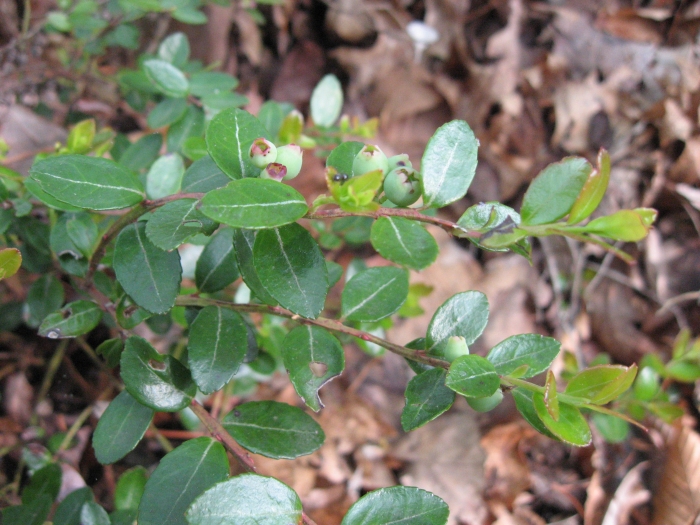Box Huckleberry
(Gaylussacia brachycera)
Box Huckleberry (Gaylussacia brachycera)
/
/

Mason Brock (Masebrock)
Public domain
Image By:
Mason Brock (Masebrock)
Recorded By:
Copyright:
Public domain
Copyright Notice:
Photo by: Mason Brock (Masebrock) | License Type: Public domain | License URL: https://creativecommons.org/public-domain/ | Uploader: Stemonitis | Publisher: Wikimedia Commons | Title: Gaylussacia_brachycera_wild.jpg | Notes: {{Information |Description ={{en|1=Gentiana acaulis (Stemless gentian) flower}} {{uk|1=Квітка тирличу (Gentiana acaulis)}} {{ru|1=Цветок горечавки}} |Source ={{own}} |Author =[[User:Borkia|Borkia]] |Date |





























Estimated Native Range
Summary
Gaylussacia brachycera, commonly known as Box Huckleberry, is an evergreen shrub or subshrub native to dry, open woodlands and forest edges in the Eastern United States. It is a low-growing plant, typically reaching 6 to 8 inches (150 to 200 mm) in height. The leaves of Box Huckleberry are reminiscent of boxwood, which is reflected in its common name. They are oval-shaped, approximately 1 inch (2.5 cm) long, glossy, and minutely toothed. During winter, the foliage takes on a reddish hue, adding seasonal interest. The flowers, which bloom in May and June, are urn-shaped and white, occasionally exhibiting a pink tinge. They are notably showy, arranged on racemes that emerge from the leaf axils. Following the flowering period, the plant produces blue berries on short pedicels from July to August, which are both ornamental and a food source for wildlife.
Box Huckleberry is valued for its evergreen foliage, which provides year-round interest, and its adaptability to various soil conditions. It is often used in cultivation for ground cover, in rock gardens, and as an understory plant in woodland gardens. It thrives best in full sun to part shade and prefers well-drained soils, although it tolerates a range of moisture levels. While it is generally low-maintenance, it can be slow to establish and spread. Gardeners should note that Box Huckleberry is not as drought-tolerant as some other ground covers and may require additional watering during prolonged dry spells.CC BY-SA 4.0
Box Huckleberry is valued for its evergreen foliage, which provides year-round interest, and its adaptability to various soil conditions. It is often used in cultivation for ground cover, in rock gardens, and as an understory plant in woodland gardens. It thrives best in full sun to part shade and prefers well-drained soils, although it tolerates a range of moisture levels. While it is generally low-maintenance, it can be slow to establish and spread. Gardeners should note that Box Huckleberry is not as drought-tolerant as some other ground covers and may require additional watering during prolonged dry spells.CC BY-SA 4.0
Plant Description
- Plant Type: Shrub, Subshrub
- Height: 0.5-1.5 feet
- Width: 1-3 feet
- Growth Rate: Slow
- Flower Color: White, Pink
- Flowering Season: Spring
- Leaf Retention: Evergreen
Growth Requirements
- Sun: Full Sun, Part Shade
- Water: Low
- Drainage: Slow, Medium, Fast
Common Uses
Bee Garden, Bird Garden, Butterfly Garden, Edible*Disclaimer: Easyscape's listed plant edibility is for informational use. Always verify the safety and proper identification of any plant before consumption., Hummingbird Garden, Low Maintenance
Natural Habitat
Native to dry, open woodlands and forest edges
Other Names
Common Names: Box-Leaved Whortleberry
Scientific Names: , Gaylussacia brachycera, Vaccinium buxifolium, Adnaria brachycera, Buxella brachycera, Decamerium brachycerum, Vaccinium brachycerum,
GBIF Accepted Name: Gaylussacia brachycera (Michx.) Torr. & A.Gray ex A.Gray